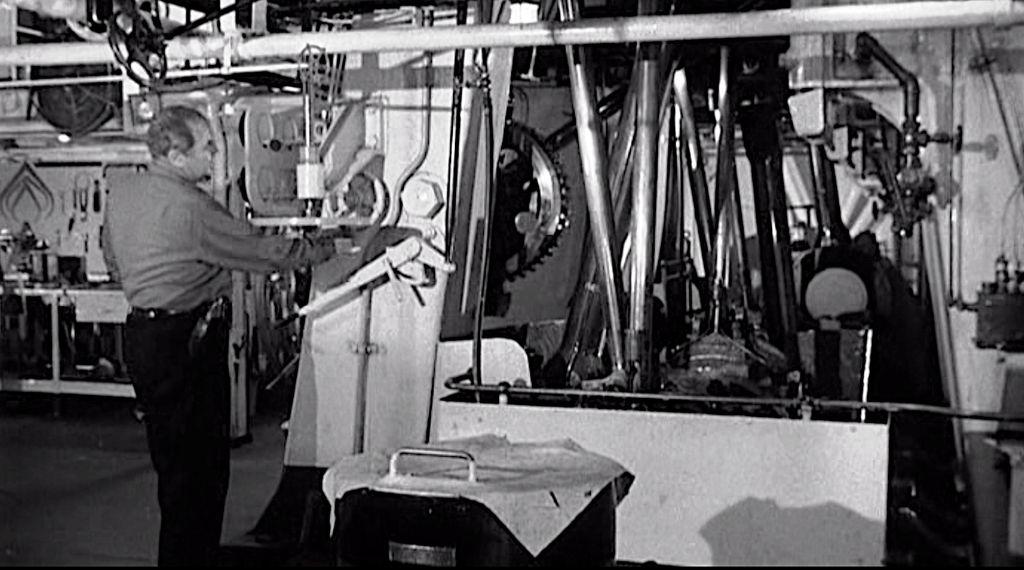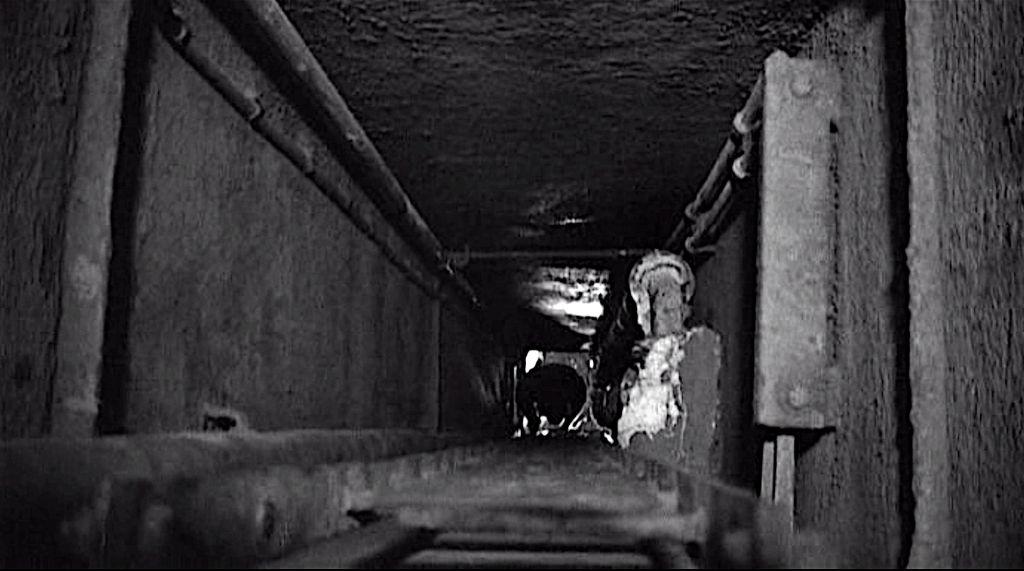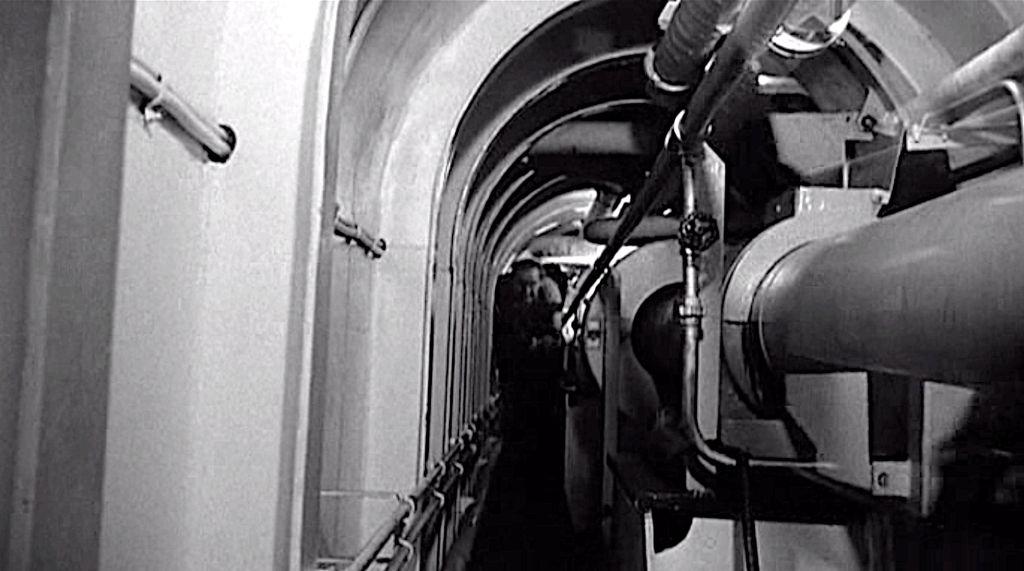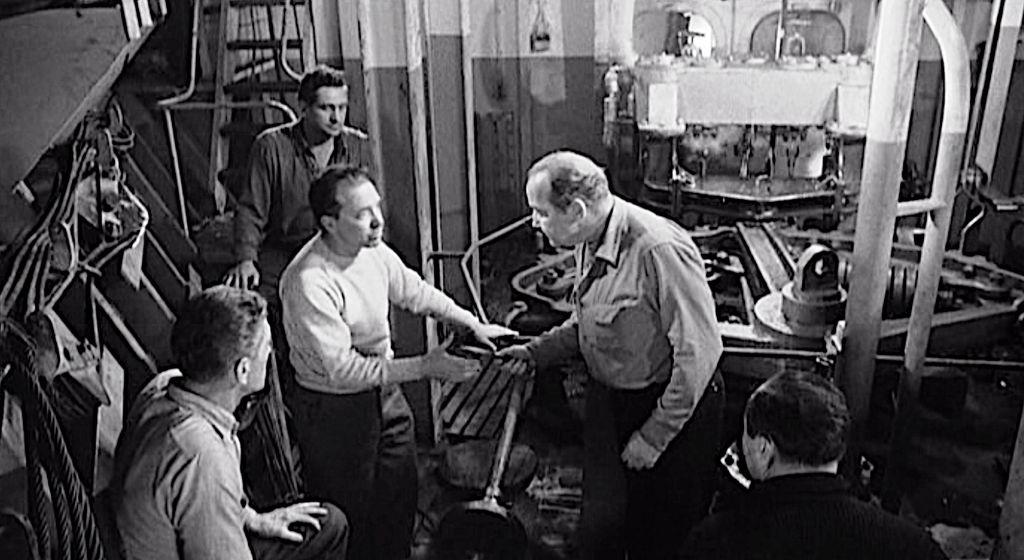

 The Decks Ran Red is the title of a 1958 movie featuring actors James Mason,
Broderick
Crawford and the singer, actress and dancer Dorothy
Dandridge. The
film's unlikely plot involves a disgruntled seaman (Crawford's
character) who
attempts to organize a mutiny aboard a cargo ship, intending to kill
the rest
of the crew and sell the ship and cargo for salvage. Unlikely, yes, but
it is
supposed to have been based on a actual event.
The Decks Ran Red is the title of a 1958 movie featuring actors James Mason,
Broderick
Crawford and the singer, actress and dancer Dorothy
Dandridge. The
film's unlikely plot involves a disgruntled seaman (Crawford's
character) who
attempts to organize a mutiny aboard a cargo ship, intending to kill
the rest
of the crew and sell the ship and cargo for salvage. Unlikely, yes, but
it is
supposed to have been based on a actual event.
There's a lot of thrills and suspense. Unusual for a Hollywood production, the movie was filmed entirely on location at sea, mostly aboard an old Liberty ship, showing the engine room and mechanical systems in actual operation.
The Decks Ran Red opens on the bridge of SS Mariposa, where James Mason is the first mate wishing for a promotion to captain. His opportunity comes when offered the job of master on a tramp freighter being chartered by Matson Navigation Company. Mariposa was one of Matson's passenger vessels that sailed from California to Honolulu and South Pacific ports.
  |
|
In SS Mariposa's engine room. Turbine
throttle board (left) and electrical power distribution. As USNS H. H.
Hess was a C4 hull, the engine room must have been similar to this. |
The newly appointed captain flies off to New Zealand, where he meets the Matson chartered ship and its crew. The following screen grabs are from the movie, filmed at sea aboard an operating WW II vintage Liberty ship, launched in 1943 as SS Philip C. Schera. In the movie it is called SS Berwin.
  |
|
| The Liberty ship's pilot house had engine order telegraph, magnetic compass and telemotor steering controls similar to those on Victory ships. |
  |
|
| The steam throttle board was just forward of the propulsion engine. In the film all of this is in motion, rods moving, crank turning and steam puffing. |
  |
|
| The receiving end of the engine order telegraph at left. At the stern a vertcial escape trunk ran from the main deck down to the end of the shaft alley. |
  |
|
| Walking through the shaft alley as the drive shaft is turning. At right, the mutineer leader loosens the nuts on a shaft bearing with an adjustable wench. |
  |
|
| The Liberty ship used in this movie appeared to be unballasted, drawing just 14 feet of water. Near the conclusion oif the film the ship bears down on a lifeboat of castaway crewmen. |

The mutineers gather in the steering machinery room at the stern. In the movie the large geared quadrant, turning the rudder post, is actually in motion. This was driven by steam powered hydraulic pumps. Victory ships had electrically powered hydraulic rams instead.
While The Decks Ran Red is perhaps not a great movie, it shows pretty much all of an operating Liberty ship, including the decks, cabins, passageways, galley and messrooms as well as the stuff that made it work.